Updated: December 15, 2025
By Santorini Dave • dave@santorinidave.com
My Favorite Florence Hotels
• 5-Star: Portrait Firenze
• 4-Star: Calimala
• 3-Star: San Giuliano Inn
• Boutique: Casa G.
• For Families: Four Seasons
• For Couples: Ville Sull’Arno
• Best Pool: Villa Cora
• Near Duomo: Brunelleschi
• Ponte Vecchio: Portrait Firenze
• Train Station: The Market
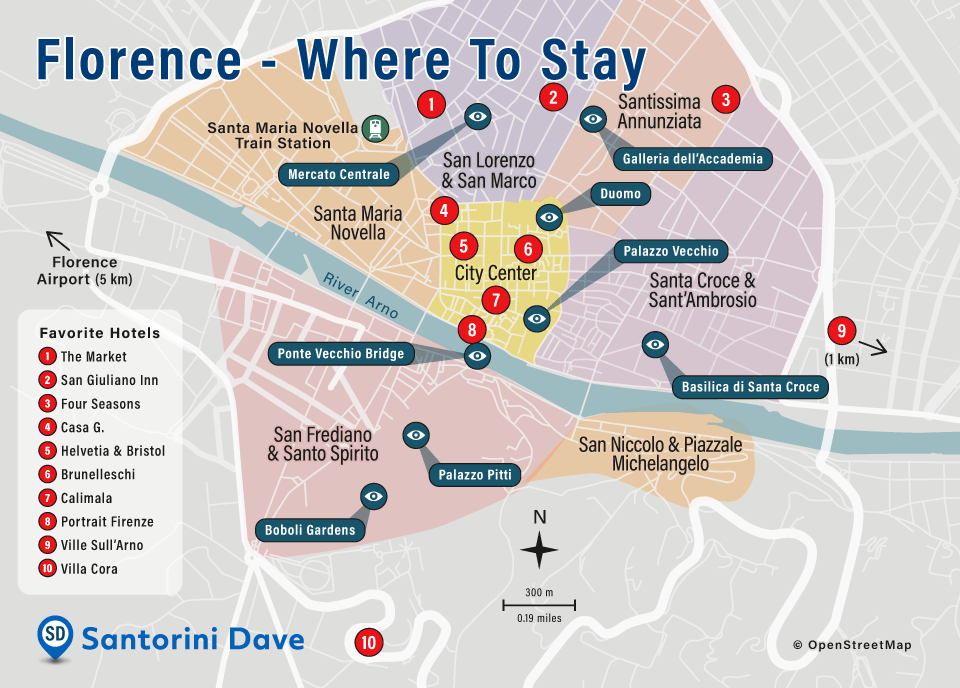
1. The Market • 2. San Giuliano Inn • 3. Four Seasons • 4. Casa G. • 5. Helvetia & Bristol • 6. Brunelleschi • 7. Calimala • 8. Portrait Firenze • 9. Ville Sull’Arno • 10. Villa Cora
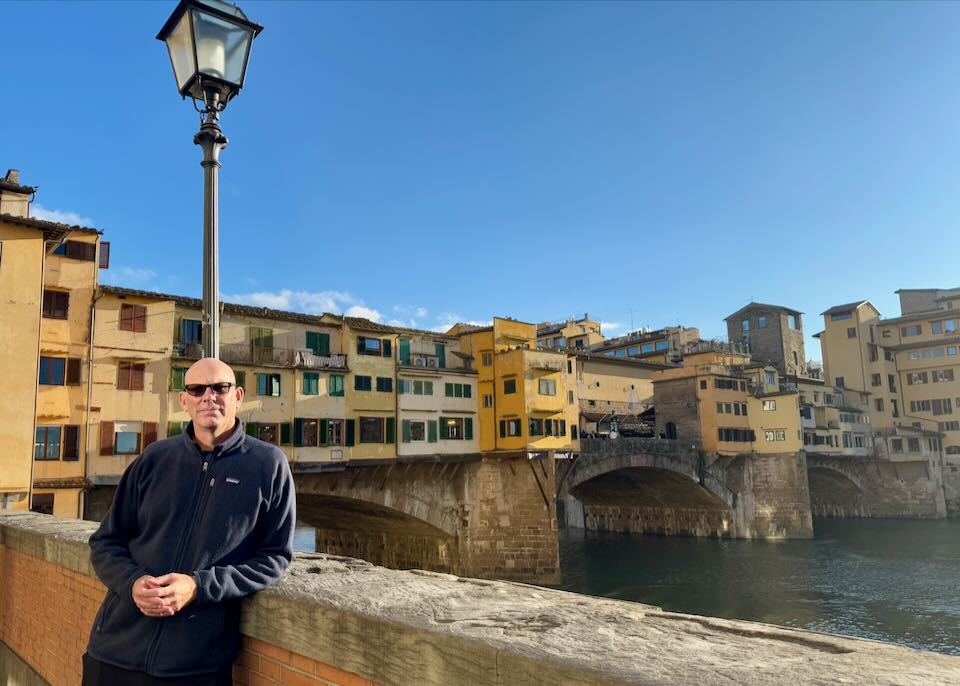
At the Ponte Vecchio in central Florence.
The Best Areas to Stay in Florence
Florence is the most walkable major city in Europe. The historic center is incredibly compact; you can walk from the Duomo in the north to the Palazzo Pitti in the south in about 20 minutes. This accessibility makes trip planning easy: almost any hotel within the main ring road is “central.”
However, the sheer density of tourists means your choice of neighborhood defines your experience. Staying near the Duomo puts you in the center of the magic but guarantees noise and crowds. Staying in the Oltrarno (across the river) offers a cooler, artisan vibe with better food, but requires more walking. For luxury and space, you often have to look to the Hills or the riverbanks of Ognissanti.
My wife ordering some goodies at the Mercato Centrale.
Florence Neighborhoods
Florence is divided by the Arno River. The majority of the “bucket list” sights (Duomo, Uffizi, David) are on the north bank. The south bank (Oltrarno) is historically the working-class artisan quarter, now transformed into the city’s dining and nightlife hub.
The City Center (Duomo & Piazza della Signoria) is the medieval heart of Florence. It’s an open-air museum packed with Renaissance palaces, high-end fashion boutiques (Gucci, Prada), and tourists. Stay here if you want to wake up next to the cathedral and be minutes from everything. The downside? It’s expensive, crowded, and many restaurants are tourist traps.
San Lorenzo sits just northwest of the Duomo. It’s dominated by the massive Mercato Centrale (the best food court in Italy is upstairs; a traditional market is downstairs) and the street stalls of the leather market. It’s energetic, slightly chaotic, and great for foodies. Just north is San Marco, the university district. It’s home to the Accademia (Michelangelo’s David) and offers a quieter, more intellectual vibe with excellent mid-range hotels and B&Bs.
Santa Maria Novella is the area around the main train station. The streets directly surrounding the station can be gritty and busy, but the neighborhood quickly elevates as you move toward the river. This is the most strategic area to stay if you plan on taking day trips to Pisa, Lucca, or Siena, as you’re close to the trains. It’s also home to some of the city’s finest luxury hotels located on the quiet Piazza Ognissanti.
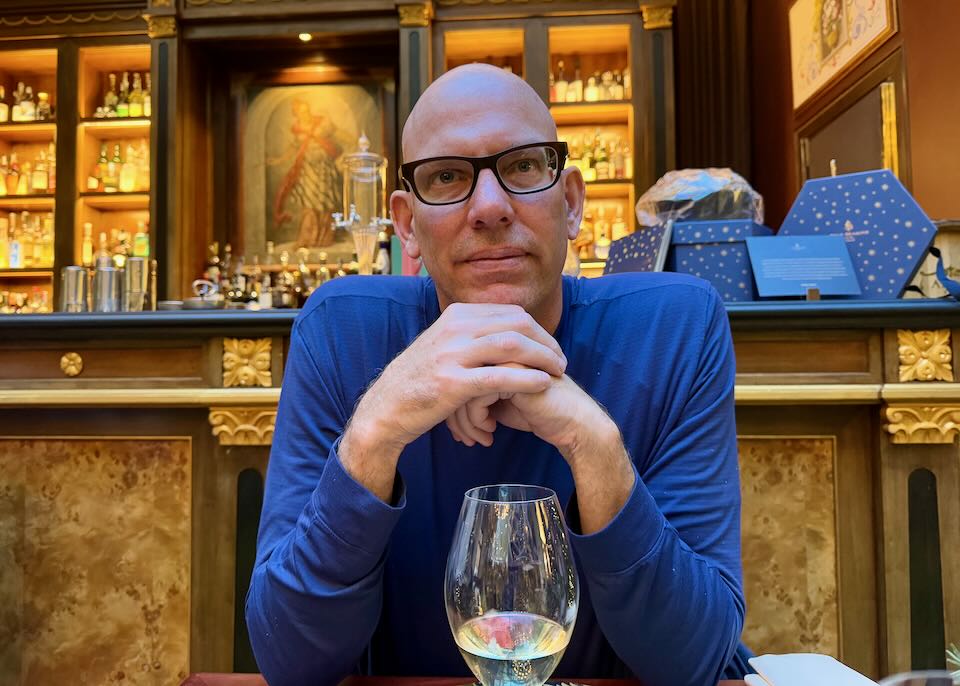
Having some wine at the Four Seasons Atrium Bar.
Santa Croce and Sant’Ambrogio lie east of the center. Santa Croce is famous for its magnificent basilica and leather workshops. It feels more “lived in” than the Duomo area and has a vibrant nightlife scene. Sant’Ambrogio, further north, is my favorite “local” neighborhood. It has the city’s best authentic food market (Mercato di Sant’Ambrogio) and fantastic, affordable trattorias where Florentines actually eat.
Santissima Annunziata is a quiet, often overlooked gem northeast of the center. Anchored by a beautiful Renaissance piazza and the Ospedale degli Innocenti, it’s artistic and serene. It puts you close to the Duomo (a 10-minute walk) without the crushing crowds.
Across the river, the Oltrarno neighborhoods of Santo Spirito and San Frediano are the coolest parts of town. These narrow streets are filled with antique shops, artisan workshops, and wine bars. At night, Piazza Santo Spirito becomes the city’s living room, filled with young locals drinking and talking. Hotels here are generally smaller, boutique properties that offer better value than across the river.
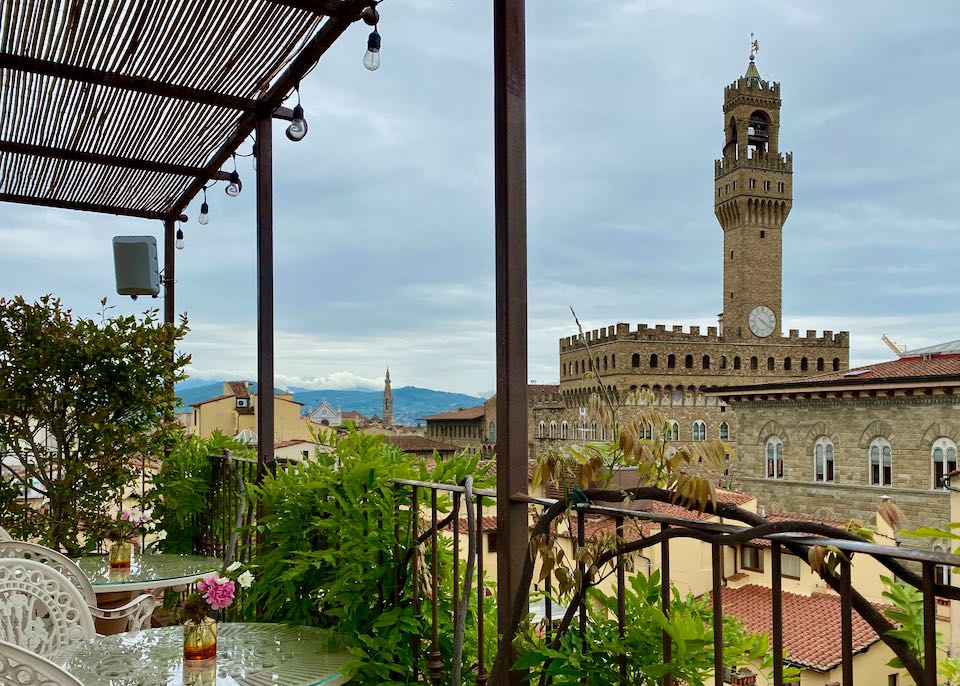
Having a meal at the Angel Rooftop Bar at Hotel Calimala, with stunning views of the Palazzo Vecchio.
San Niccolò is a charming “village within a city” located at the base of the hill leading up to Piazzale Michelangelo (the famous viewpoint). It’s romantic and leafy, with excellent restaurants and the best city gates. Further south are the Hills of Oltrarno (San Miniato). This is where you find grand villas, gardens, and hotels with swimming pools – a rarity in Florence. It is peaceful and luxurious, but be prepared to take taxis or walk uphill to get home.
Getting Around Florence
1. Walking (The Only Way)
Florence is one of the few cities in the world where walking is not just the best option; it’s often the only option. The historic center is a pedestrian-priority zone (ZTL). Streets are narrow, often crowded, and many are closed to traffic entirely.
• The Scale: You can cross the entire tourist center (from Santa Croce to Santo Spirito) in 25 minutes.
• The Warning: Do not rent a car to explore Florence. You cannot drive in the center without incurring massive fines (ZTL cameras are everywhere), and parking is extortionate. Only rent a car for day trips leaving the city.2. The Tram (Airport Connection)
The tram network is clean, safe, and air-conditioned.
• Line T2 (The Airport Line): This is the most vital link for tourists. It runs from Peretola Airport (FLR) directly to Santa Maria Novella train station in the city center. It takes 20 minutes, costs €1.70, and runs every 4-5 minutes. It’s faster and cheaper than a taxi.
• Line T1: Connects to the “Villa Costanza” parking lot on the highway – great if you’re driving into Florence and want to park your car cheaply outside the city and ride in.3. The Bus System (Now Contactless)
The Autolinee Toscane bus system covers the whole city.
• Contactless Payment: You no longer need to hunt for tobacco shops to buy paper tickets. You can now tap your contactless credit card or phone (Apple Pay/Google Pay) on the green readers inside the bus.
• The “C” Lines: Keep an eye out for the small electric buses labeled C1, C2, C3, and C4. Unlike the big city buses, these tiny buses are small enough to navigate the narrow streets of the historic center, making them perfect for hopping between museums when your feet are tired.
• Key Routes: Bus #7 takes you up to the Roman ruins and views of Fiesole. Bus #12 takes a scenic loop up to Piazzale Michelangelo.4. Taxis & Uber
• Do not hail: You cannot flag down a taxi on the street in Florence. They will not stop. You must go to a designated Taxi Rank (white lines) found in major squares like Piazza della Repubblica or the Train Station.
• Apps: Download AppTaxi or itTaxi to book rides. Uber is available in Florence, but it is primarily “Uber Black” and “Van” services, which are significantly more expensive than standard taxis.The Best Places to Stay in Florence
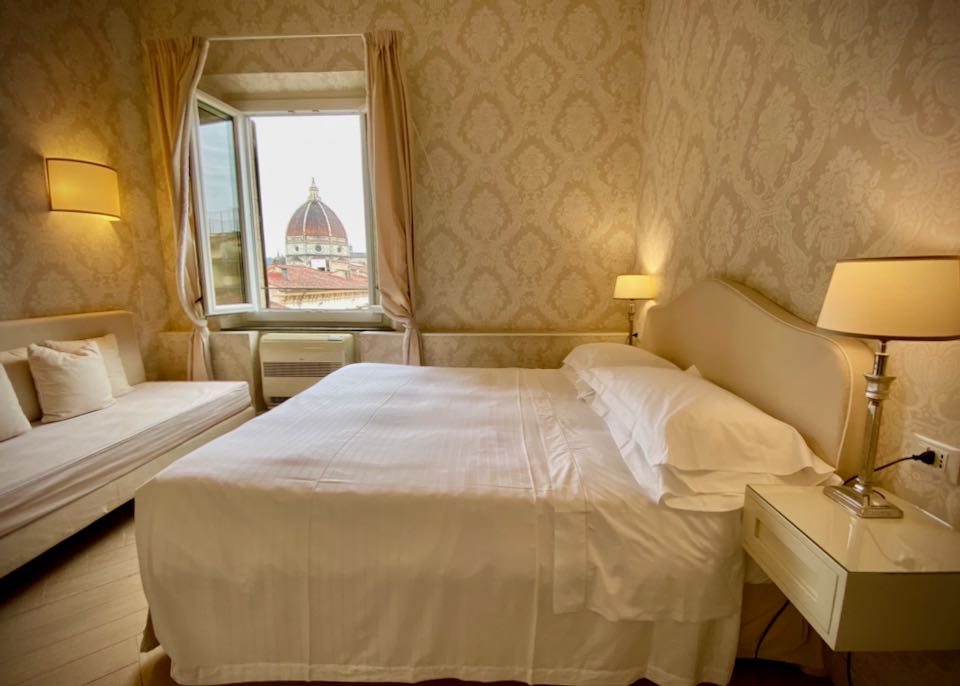
Our suite in the the family-run San Giuliano Inn, a lovely and central 3-star with incredible Duomo views.
- Best Luxury Hotels in Florence
Portrait Firenze • Four Seasons • Helvetia & Bristol • St. Regis • Villa Cora- Best Boutique Hotels in Florence
Calimala • Casa G. • Palazzo Ridolfi • Palazzo Vecchietti • The Place • Brunelleschi- Best Cheap/Midrange Hotels in Florence
Alfieri9 • B&B San Remigio • Drom Florence • Hotel Alessandra • San Giuliano Inn • Torre dei Lari- Best Hotels for Families in Florence
Four Seasons (luxury) • La Farina Apartments (midrange) • Alessandra (affordable)- Best Hostels in Florence
My Friends • Ostello Bello • YellowSquareOur room at the Helvetia & Bristol.
Best Places in Florence for…
- Best Neighborhood in Florence for Sightseeing: City Center
The narrow, cobbled streets of City Center contain Florence’s most iconic sights. Between the glittering jewelry shops of the medieval Ponte Vecchio and the impressive Duomo’s spectacular marble facade lies the best-preserved Renaissance old town in the world. Add in the spiky grandeur of the Palazzo Vecchio and the unrivaled art collections of the Galleria degli Uffizi and the Bargello, and you have a mind-boggling array of great art and architecture in a very narrow footprint. For more gorgeous art and churches, head to the Cappelle Medicee in San Lorenzo and the Galleria dell’Accademia in San Marco, home to Michelangelo’s colossal David. Because Florence is so compact walkable, however, it’s easy to stay in cheaper lodgings in the neighborhoods beyond the City Center – San Marco, Santa Maria Novella, and the Oltrarno – and not lose out in terms of convenience.
- Best Neighborhoods in Florence for Nightlife: San Frediano and Santo Spirito (Oltrarno), Santa Croce
There are plenty of hip bars and nightspots scattered all over Florence, but when searching for a place that really come alive at night, full of craft beer, cocktails, even live music or film screenings, head for hip Santa Croce, especially around Mercato di Sant’Ambrogio. South of the Arno, San Frediano and Santo Spirito offer a similarly eclectic mix of venues, particularly along Borgo San Frediano and Piazza Santo Spirito. Rasputin is great for cocktails and Il Santino is best for wine, while the Loggia Roof Bar of the Hotel Palazzo Guadagni has incredible scenic views. For a splurge, visit the Picteau Bistrot & Cocktail Bar overlooking the river.My wife and I at the Duomo.
- Best Neighborhoods in Florence for Food and Restaurants: San Frediano & Santo Spirito, Santa Croce
Good food is everywhere in Florence, though you’ll need to dodge the tourist traps to find the best places in the Center. San Lorenzo offers the Mercato Centrale, full of fresh produce, gourmet food stalls, and a selection of great eateries, from authentic Tuscan stall Da Nerbone to Pescheria Sugarello’s fish and chips. However, Santa Croce, as well San Frediano and Santo Spirito in Oltrarno have the best range of excellent food, often at reasonable prices. The former has great cafes, gourmet street food at Mercato Sant’Ambrogio, dinner theater at Teatro del Sale, the vaunted Cibrèo stable of restaurants, and Florence’s only 3-Michelin-star at Enoteca Pinchiorri. San Frediano and Santo Spirito’s offerings range from traditional Tuscan to modern reinventions at Essenziale and Il Santo Bevitore, to authentic tapas and vegan cuisine. For special occasion dining, try Ristorante Borgo San Jacopo or iO-Osteria Personale.- Best Neighborhoods for Shopping: City Center
Florence is best known for luxury items, from the fashion houses of Gucci and Ferragamo, to fine gold jewelry and high-quality leather goods. It’s very touristy, but the Ponte Vecchio’s jewelers and goldsmiths and are the real deal. Via de’ Tornabuoni is where you’ll find showrooms of all the top fashion designers and luxury brands: Tiffany & Co, Burberry, Alexander McQueen, Balenciaga, Gucci, Prada and more. For cheaper items, check out the stalls surrounding the Mercato Centrale in San Lorenzo, or department stores like Rinascente on Piazza della Repubblica (where there’s also a huge Zara store, Michael Kors boutique, and a Red Bistrot bookstore).
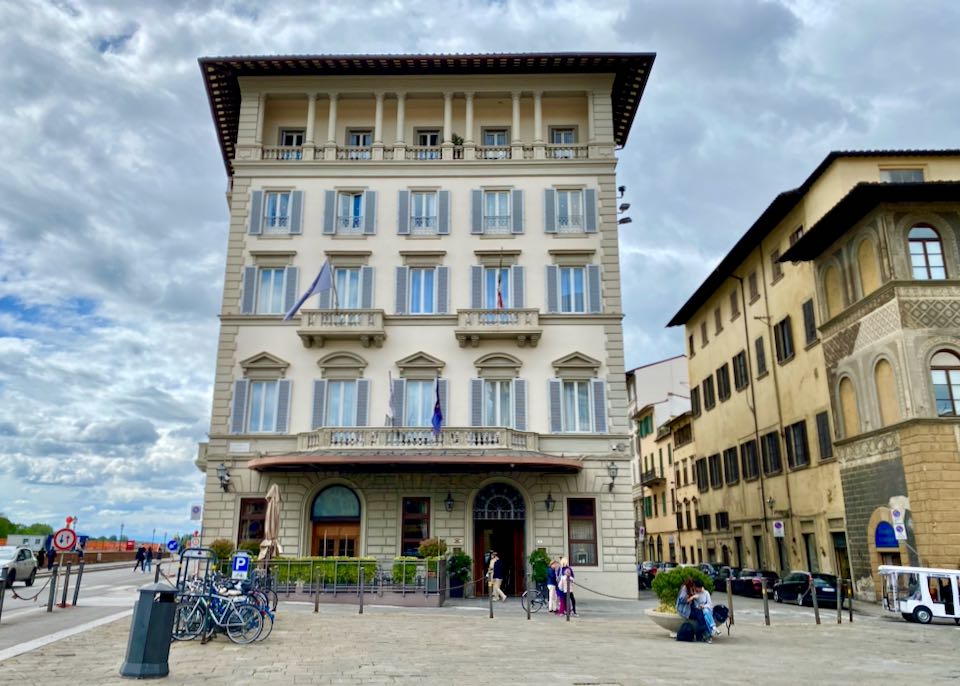
The luxurious St. Regis Hotel is located on the river and less than a 10-minute walk to the Santa Maria Novella train station.
- Best Neighborhoods in Florence for Families: Santa Maria Novella, Santissima Annunziata, and San Niccolò
Santa Maria Novella is handily located between the main train station, City Center, and river. It’s close to all the big historic attractions as well as the huge Parco delle Cascine to the west, and proximity to the station means easy day trips to rural Tuscany and beyond. San Niccolò is quieter and more residential than the Center, with beautiful parks including Giardino delle Rose. Hotels here often have gardens and may even boast a pool. Santissima Annunziata offers easy walking access to Florence’s top attractions and dining, while remaining calm and quiet through the night.- Best Neighborhood in Florence to Stay for First Timers: City Center
For a newcomer, there is nothing better than to immerse yourself in the intense sights of the City Center. From here, it’s an easy walk to all the other listed neighborhoods. Santa Croce is another good option, just east of those central attractions, but with more of a local flavor, and quieter areas if that’s what you need. Both offer excellent accommodation for all budgets.My kids and I doing a pizza making class in Florence.
- Most Romantic Neighborhood in Florence: San Niccolò & Piazzale Michelangelo
The City Center’s heady mix of picturesque streets, beautiful art, and history combine to create an almost impossibly romantic atmosphere. But San Niccolò and the hills behind Piazzale Michelangelo give you quaint, old streets with sweeping views of the city, as well as elegant boutiques and fine dining – and a bit more privacy.- Best Neighborhoods in Florence for a Local Vibe: Santa Croce/Sant’Ambrogio, San Frediano
Santa Croce is close to, but a lot less touristy than, the City Center. Its narrow streets are rarely crowded beyond Piazza di Santa Croce, and the Mercato di Sant’ Ambrogio to its north attracts more locals and students than tourists for lunch and at night – the surrounding streets offer some of the best food stalls, cafés, and restaurants in the city. San Frediano across the river in Oltrarno is another neighborhood with a strong local identity, with Piazza del Carmine and Piazza Tasso the heart of the community and Borgo San Frediano a good place to seek out no-frills trattorias and bars.My wife and I arriving by train in Florence.
- Best Neighborhoods in Florence for Walking: Hills of Oltrarno
Florence is a pleasure to walk around. Whether getting lost in the narrow streets of City Center or peeking into artisans’ workshops in Oltrarno, the city offers countless treasures you’re not likely to discover any other way. The green hills south of the river offer a different experience for those who enjoy climbing roads and trekking trails – a chance to explore the gorgeous Giardino di Boboli, visit the Forte di Belvedere, and walk up winding streets with stunning views down into the city and along the old city walls.- Safest Areas of Florence
Florence is, in general, a city where visitors can feel secure. In particular, areas which are more residential – like Santa Croce and Sant’Ambrogio, or San Frediano, Santo Spirito, San Niccolò, and Piazzale Michelangelo across the Arno – are very safe. Tourists should simply take the usual precautions, e.g. watch their bags and stick to busy streets late at night.Congested and heavily-touristed areas tend to be places where pickpockets are a risk, especially around the Ponte Vecchio, Piazza del Duomo, Mercato Centrale, and other City Center hot spots. Otherwise, the city center is safe. The streets around Stazione Santa Maria Novella can feel sketchy and are best avoided late at night.
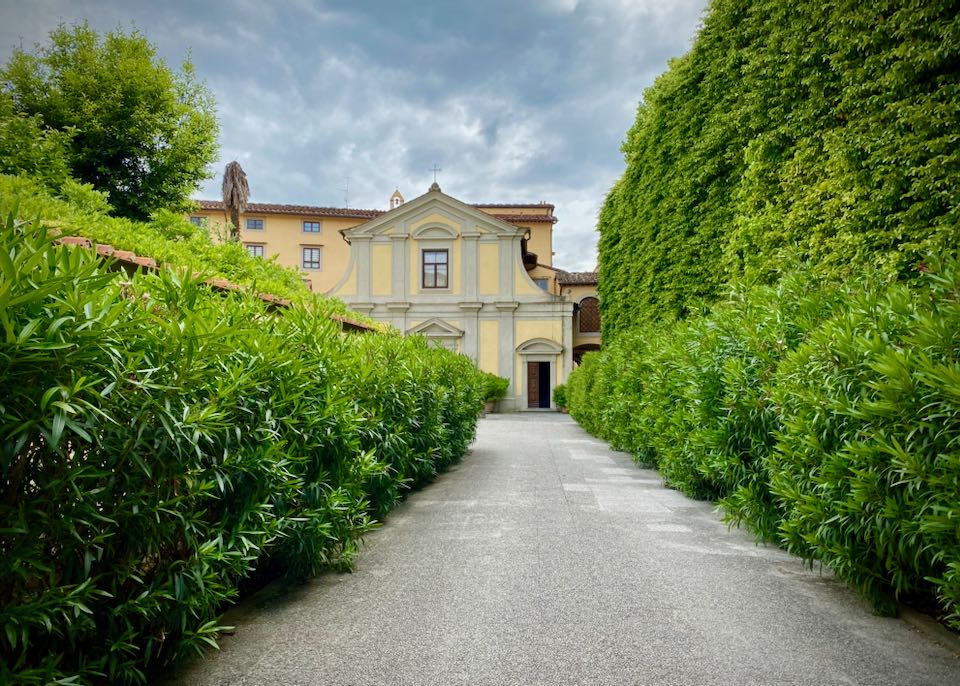
The Horto Convento is a chic, modern hotel set in a converted monastery in San Frediano.
The 8 Best Neighborhoods in Florence for Tourists
1. City Center
The gorgeous heart of Florence is a feast of medieval and Renaissance art and architecture. The Piazza del Duomo has long been the spiritual center of the city, with its mesmerizing Cathedral (Duomo) crowned by Brunelleschi’s dome; Giotto’s Campanile, and Lorenzo Ghiberti’s (replica) Gates of Paradise gracing the doors of the the Baptistry across the way. The Museo dell’Opera del Duomo on the square contains sensational renaissance art, including the original “Gates of Paradise” and work by Donatello.
Via dei Calzaiuoli (lined with high-end boutiques) leads south from here to the political center of Florence, the Piazza della Signoria, dominated by the medieval Palazzo Vecchio (town hall) and mesmerizing statues in the Loggia dei Lanzi, as well as old-school café Rivoire. Nearby is the entrance to Italy’s most famous art gallery, the Galleria degli Uffizi. A short walk northeast lies the Museo Nazionale del Bargello, the second of Florence’s “big three” art museums – this one devoted to sculpture, and the Casa di Dante, birthplace of the medieval Italian writer, while on the riverbank the Museo Galileo contains a unique collection of historical scientific equipment. It’s also the best place to photograph the Ponte Vecchio, the city’s iconic shop-lined bridge over the Arno.
In between these two main plazas lies the church and museum of Orsanmichele, and just to the west, the more formal Piazza della Repubblica, with its old-fashioned carousel and historic cafés Gilli and Paszkowski. There’s also the Mercato Nuovo (aka Mercato del Porcellino), with souvenir stalls crammed around a bronze boar statue known as “Il Porcellino” and reported to guarantee a return to Florence to those who will rub its snout.
A little further west, the Palazzo Strozzi hosts traveling art exhibitions, while the Museo Marino Marini is dedicated to the iconic Tuscan sculptor. Learn the history of the Via de’Tornabuoni fashion boutiques at the Museo Salvatore Ferragamo, established by the local shoe designer (Gucci, Pucci, and Cavalli were the other members of fashion’s “Florentine four”). All manner of tasty eats can be found in the City Center too, from gourmet panini at All’Antico Vinaio to elegant Michelin-starred dining at Ora d’Aria; bars range from casual to chic rooftop perches.
Staying in the City Center is highly convenient but usually very expensive – it’s also the busiest part of town, with the main streets and piazzas mobbed in high season. There are some bargains to be had in the B&Bs to the north and east of the Duomo, noted below.
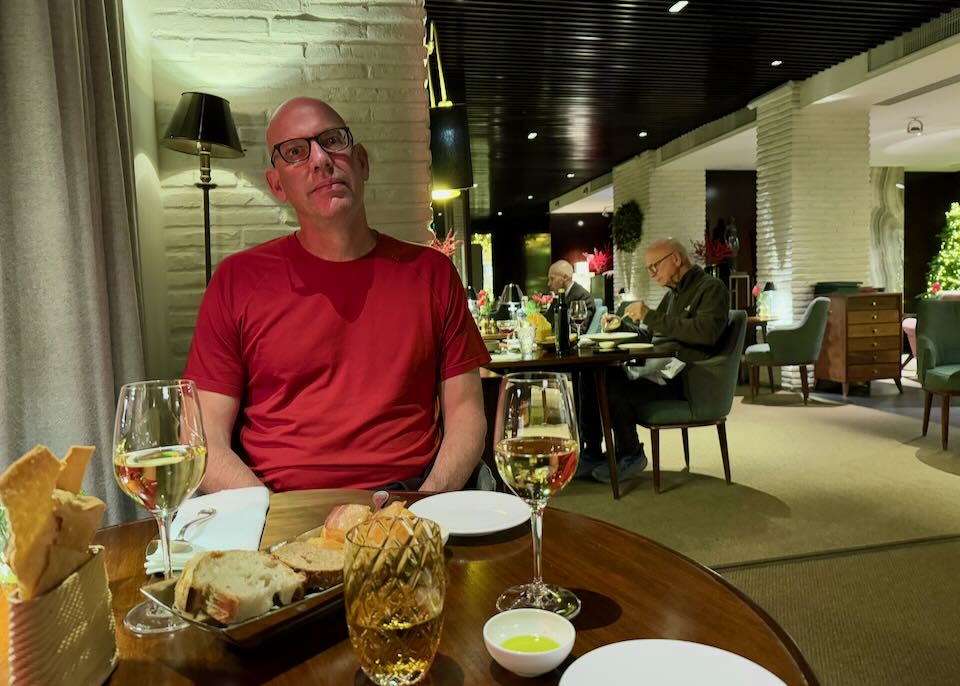
Having dinner at the Portrait Firenze hotel.
- Best Hotels in Florence City Center
Bernini Palace • Hotel phone: +39 055 288621
Brunelleschi Hotel • Hotel phone: +39 055 27370
Casa G. Firenze • Hotel phone: +39 055 802 8859
Golden Tower Hotel & Spa • Hotel phone: +39 055 287860
Helvetia & Bristol Firenze • Hotel phone: +39 055 26651
Hotel Calimala • Hotel phone: +39 055 093 6360
Hotel degli Orafi • Hotel phone: +39 055 26622
Palazzo Vecchietti • Hotel phone: +39 055 230 2802
Portrait Firenze • Hotel phone: +39 055 2726 8000
Room Mate Isabella • Hotel phone: +39 055 239 6464
The Savoy • Hotel phone: +39 055 27351- Best Cheap/Midrange Hotels
B&B Emozioni Fiorentine • Hotel phone: +39 055 290136
B&B Magnifico Messere • Hotel phone: +39 333 969 9308
B&B San Remigio • Hotel phone: +39 055 238 2694
Hotel Alessandra • Hotel phone: +39 055 283438
Hotel Davanzati • Hotel phone: +39 055 2866662. San Lorenzo and San Marco
Northwest of the Duomo and east of the train station is the small neighborhood of San Lorenzo, long associated with the powerful Medici family and today a great destination for foodies. Start with the gourmet food stalls on the first floor of the Mercato Centrale, serving everything from traditional lampredotto (tripe) to artisanal pizza and chocolate. Head over to Via de’ Ginori for cool bistro/café La Ménagère, quality panini at SandwiChic, and fine gelato at My Sugar. The main sight here is the Cappelle Medicee, the grand burial place of the Medici (with tombs carved by Michelangelo), adjoining the grand basilica of San Lorenzo itself (with two bronze pulpits by Donatello).
A little further north, San Marco is the city’s college district, the long narrow streets full of students tramping between classes at the University of Florence. The primary attractions up here include the Galleria dell’Accademia (home to Michelangelo’s David and Slaves; reservations essential), the beautiful Monastery of San Marco, painted by Fra Angelico and his pupils, and the university’s quirky but fascinating Natural History Museum. The nearby ex-Benedictine convent of Sant’Apollonia houses Andrea del Castagno’s Last Supper.
These two districts contain a massive stock of hotels, and we consider San Lorenzo to be one of the best places to stay in Florence; centrally located and within easy walking distance of both the Duomo and the train station. Rates are generally high here, but cheaper B&Bs can be found in San Marco, a bit further from the action.
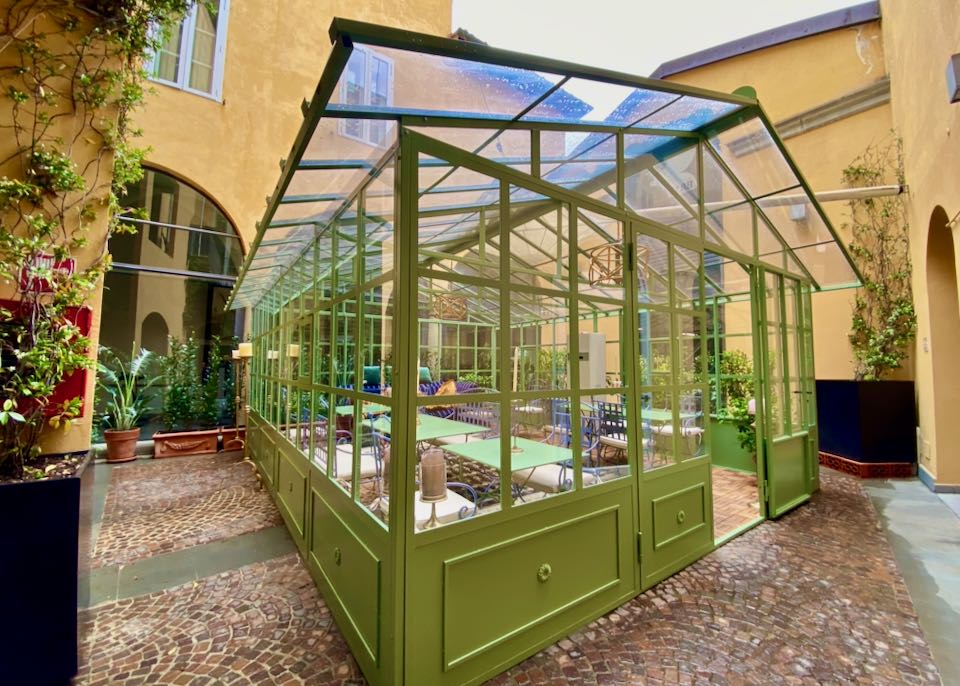
The central courtyard dining area at San Lorenzo’s stylish Hotel Number Nine hotel.
- Best Hotels in San Lorenzo & San Marco
Arte’ Boutique Hotel • Hotel phone: +39 055 1993 3011
Hotel Number Nine • Hotel phone: +39 055 293777
Hotel Spadai • Hotel phone: +39 055 627 0800
Palazzo Alfani • Hotel phone: +39 346 033 9931
Palazzo Castri 1874 • Hotel phone: +39 055 472118
Palazzo dei Conti • Hotel phone: +39 055 1993 8442
Room Mate Luca • Hotel phone: +39 055 264 5539
Hotel Orto De’Medici • Hotel phone: +39 055 483427
The Market Urban Hotel • Hotel phone: +39 055 212676- Best Cheap/Midrange Hotels
B&B Lorenzo de’Medici • Hotel phone: +39 380 238 4105
HomEdo B&B • Hotel phone: +39 324 083 3307
Il Guelfo Bianco • Hotel phone: +39 055 288330
Residenza San Gallo 79 • Hotel phone: +39 338 425 9357
San Giuliano Inn • Hotel phone: +39 055 239 6450
Hotel City • Hotel phone: +39 055 211543- Best Hostel
PLUS Florence • Hotel phone: +39 055 628 63473. Santa Maria Novella (train station)
Santa Maria Novella is a large and varied area stretching west from Via de’ Tornabuoni, between the main train station and the river. Although being situated close to the station is very convenient, avoid the grungy area around it and look instead to the bustling Piazza di Santa Maria Novella and its lovely church (home to exceptional artwork by Masaccio, Filippino Lippi, and many others). At the other end of the square, the Museo Novecento showcases Italian 20th-century art from the likes of Giorgio Morandi and Giorgio de Chirico. Between here, the center, and the river, you will find excellent shopping, with top labels on Via de’ Tornabuoni and a myriad of hip boutiques, galleries, and vintage shops on Via della Spada, Via dei Fossi, and more. There is some great food and drink to be found too, including classy riverside bars, craft cocktails at Manifattura, and plenty of trattorias serving Tuscan cuisine.
There are beautiful boutique and luxury hotels around Piazza di Santa Maria Novella and the river, but this is the also best part of town for bargains, especially at B&Bs and hostels – the quality has improved a lot in recent years and the area around the train station is not as sketchy as it once was.
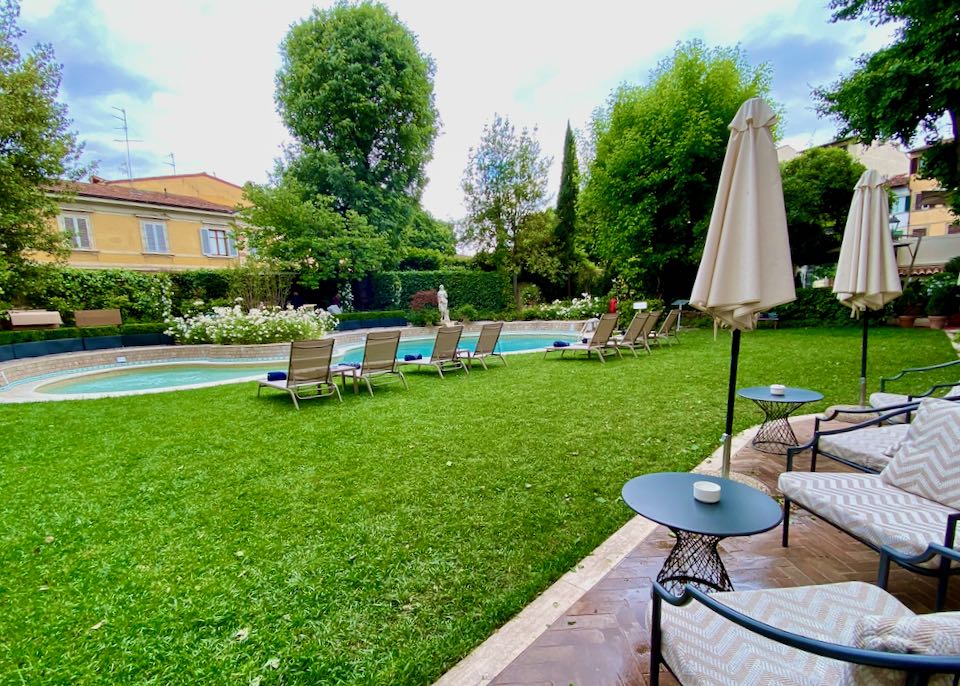
Sina Villa Medici, located just a 10-minute walk from from the train station, has a tranquil garden swimming pool.
- Best Hotels in Santa Maria Novella
25hours at Piazza San Paolino • Hotel phone: +39 055 296 6911
Palazzo di Camugliano • Hotel phone: +39 055 265 4578
The Place Firenze • Hotel phone: +39 055 264 5181
Sina Villa Medici • Hotel phone: +39 055 277171
The St. Regis Florence • Hotel phone: +39 055 27161
Westin Excelsior • Hotel phone: +39 390 552 7151- Best Cheap/Midrange Hotels
B&B Santa Maria Novella • Hotel phone: +39 055 936 1170
B&B Terrazza Belfiore • Hotel phone: +39 329 173 5876
Hotel Accademia • Hotel phone: +39 055 293451
BBH Firenze • Hotel phone: +39 349 748 7027- Best Hostels
Hostel Archi Rossi • Hotel phone: +39 055 290804
My Friends • Hotel phone: +39 055 280115
Ostello Bello Firenze • Hotel phone: +39 055 213806
YellowSquare Florence • Hotel phone: +39 055 031 77184. Santa Croce and Sant’Ambrogio
Santa Croce and Sant’Ambrogio are the best areas for local flavor north of the river. Just east of Via del Proconsolo and just steps from the central sights, they manage to be less touristy and more laidback, with narrow, atmospheric streets, a great local market, and the old Jewish quarter. Santa Croce boasts its own impressive attractions, including the lovely Basilica di Santa Croce itself, resting place of a host of Florentine greats, including Michelangelo, Macchiavelli, and Galileo, as well as priceless artwork by Giotto, Brunelleschi, Donatello, and many more. Nearby, the Casa Buonarroti marks the site where Michelangelo likely lived in the early 16th century, containing a few early works by the Renaissance master.
North of Santa Croce, the Sant’Ambrogio food scene is fantastic, whether you’re shopping for produce at Mercato di Sant’Ambrogio, sampling the classic lampredotto sandwiches at the famous Tripperia Pollini food cart, or enjoying the fantastic Tuscan fare at one of the Cibrèo restaurants nearby. A little further north stands the Synagogue and Jewish Museum of Florence, testament to the city’s long Jewish history. At night, the neighborhoods draw a hip, young crowd to their great bar scenes – especially on busy Via dei Benci and around the market, like the live music venue Le Murate.
Hotels out here can be quite expensive, reflecting the neighborhood’s chic reputation – it’s a bit of a walk to the main sights in the center, but it’s far less touristy than the areas closer to the train station.
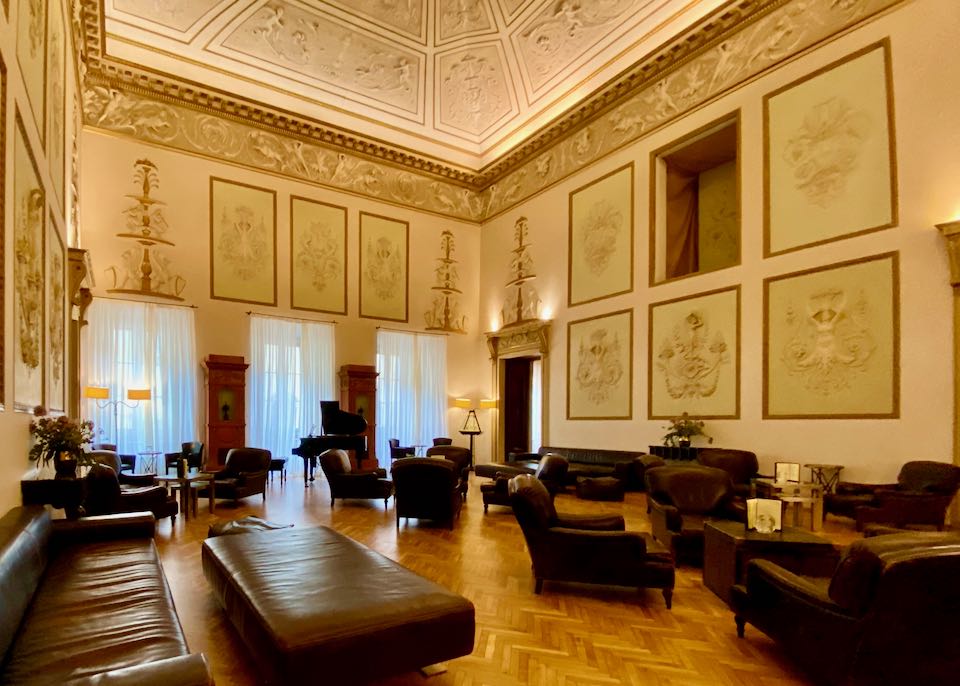
The elegant interior of Palazzo Firenze.
- Best Hotels in Santa Croce & Sant’Ambrogio
Palazzo Firenze • Hotel phone: +39 055 234 2230
Palazzo Roselli Cecconi • Hotel phone: +39 055 074 9120
Ville Sull’Arno • Hotel phone: +39 055 670971- Best Cheap/Midrange Hotels
B&B La Casa dei Tintori • Hotel phone: +39 055 263 9771
Hotel Bodoni • Hotel phone: +39 055 240741
La Maison du Sage • Hotel phone: +39 055 094 8343
Le Contesse • Hotel phone: +39 328 036 2843
Locanda de ‘Ciompi • Hotel phone: +39 055 263 80345. Santissima Annunziata
Santissima Annunziata sits northeast of the City Center (adjacent to San Marco), built around a serenely designed Renaissance piazza featuring the Santissima Annunziata basilica, dating to the medieval era with an elegant facade. The Ospedale degli Innocenti (a former orphanage turned museum) features a beautiful loggia of columns and arches designed by Brunelleschi and copied over the centuries onto other buildings making up the square. The nearby Museo Archeologico boasts an especially good Etruscan collection. One of Florence’s hidden gems lies in the middle of the ring road a stiff walk east – the English Cemetery is the tranquil resting place of poets Elizabeth Barrett Browning, Arthur Clough, and Walter Savage Landor.
Though historically important and easily walkable to all of Florence’s most iconic sights, this area stays remarkably low key – ideal for families and for quiet retreats from the crowds. There are a number of excellent restaurants, especially toward the south and western parts near the City Center, San Lorenzo, and San Marco areas. There are far fewer hotels up here, but they tend to be high quality and much quieter than in the City Center.
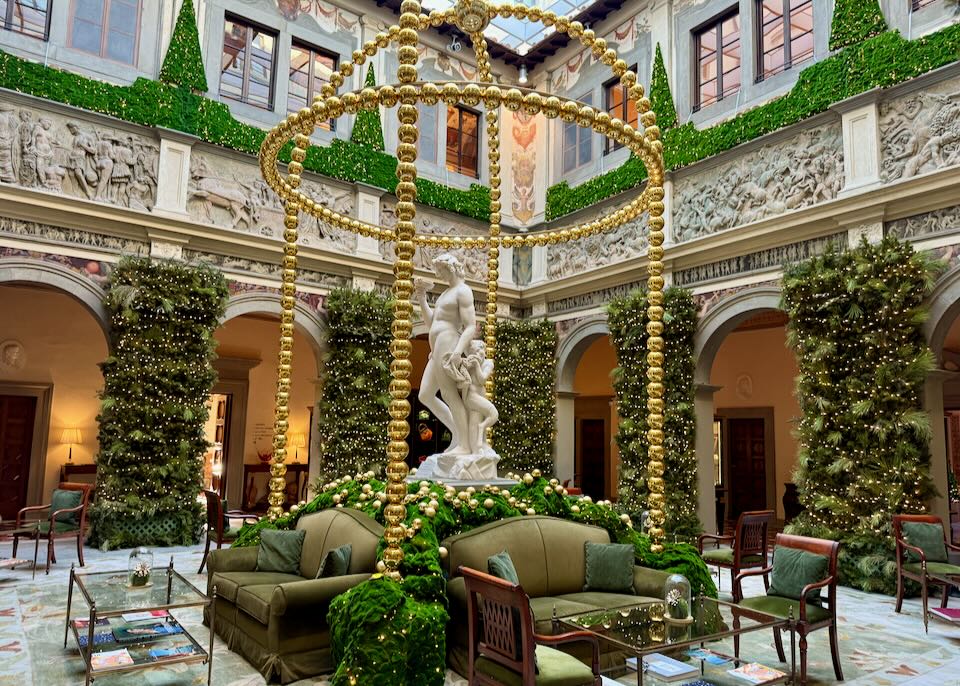
The gorgeous lobby at the Four Seasons Hotel Firenze.
- Best Hotels in Santissima Annunziata
Four Seasons Hotel Firenze • Hotel phone: +39 055 26261
Loggiato dei Serviti • Hotel phone: +39 06 9437 7220
Guest House Morandi • Hotel phone: +39 055 234 4748
Residence Hilda • Hotel phone: +39 055 288021- Best Cheap/Midrange Hotels
Alfieri9 • Hotel phone: +39 055 263 8121
B&B Giorni Dipinti • Hotel phone: +39 055 226 02296. San Frediano and Santo Spirito
These two intriguing neighborhoods lie in Oltrarno, the south bank of the river, between the Ponte Vecchio and Porta Romana, the ancient city’s southern gate. The spirit here is bohemian and local, though gentrification has made this part of town more fashionable, with lots of hot new restaurants, craft cocktail places, and wine bars; check out Piazza Santo Spirito and Borgo San Frediano just for starters. Also known as the artisan quarter, it’s packed with antique shops, hip boutiques, galleries, and workshops; go shopping on Borgo San Jacopo, Via Santo Spirito, and Via Romana. Sights include Brunelleschi’s Basilica di Santa Spirito, the church Santa Felìcita (with paintings by Pontormo), and the grand Palazzo Pitti with its clutch of eight museums – the most absorbing is the art collection in the Galleria Palatina. You’ll need to book a time slot for the nearby Cappella Brancacci, the famous medieval chapel blanketed in gorgeous frescoes by Masolino and Masaccio.
This area is known for its stylish boutique hotels – it’s generally much better value than north of the river, with some good value B&Bs as well as luxury options.
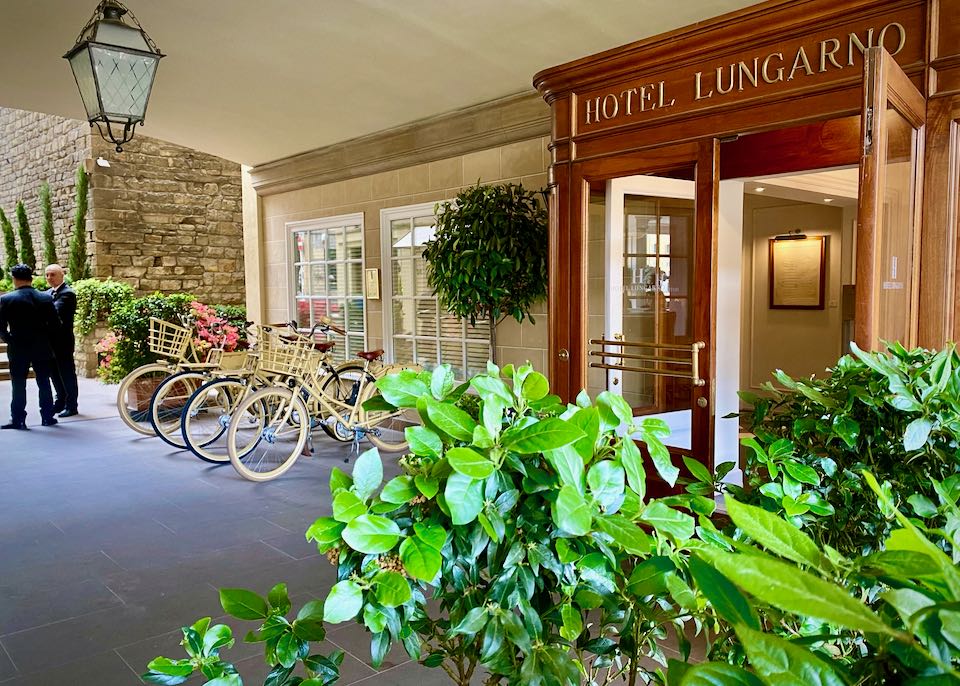
Entrance to the beautiful Hotel Lungarno, located in San Frediano, on the river opposite the City Center.
- Best Hotels in San Frediano & Santo Spirito
AdAstra Florence • Hotel phone: +39 055 075 0602
Horto Convento • Hotel phone: +39 055 223529
Hotel Lungarno • Hotel phone: +39 055 27261
Oltrarno Splendid • Hotel phone: +39 055 464 8555
Ottantotto Firenze • Hotel phone: +39 055 068 3669
Palazzo Guicciardini • Hotel phone: +39 055 284711
Palazzo Ridolfi • Hotel phone: +39 392 715 4809
San Pier Novello in Oltrarno • Hotel phone: +39 380 775 7786
SoprArno Suites • Hotel phone: +39 055 046 8719- Best Cheap/Midrange Hotels
B&B Beatrice • Hotel phone: +39 055 238 2143
Drom Florence • Hotel phone: +39 335 617 8817
Foresteria Valdese di Firenze • Hotel phone: +39 055 212576
La Casa di Annusca • Hotel phone: +39 055 010 6384- Best Hostel
Ostello Tasso • Hotel phone: +39 055 060 20877. San Niccolò and Piazzale Michelangelo
Picturesque San Niccolò lies east of Santo Spirito along the river, while quieter Piazzale Michelangelo rises on the hillside to its south. Like the other Oltrarno areas, San Niccolò is arty and buzzing, which makes for great shopping. Explore Via San Niccolò, where you’ll find perfumier Lorenzo Villoresi, and funky street art at Clet. Climb medieval landmark San Niccolò Tower for great views, and enjoy good food and drink in its shadow; excellent pasta at Zeb, cocktails at The Speakeasy, and elegant dining at Hosteria del Bricco. The main sights here include the artwork inside the Museo Stefano Bardini, and the 17th-century Villa Bardini, featuring art by Pietro Annigoni and lush adjacent gardens with beautiful views over the city.
Piazzale Michelangelo is a largely residential area with lovely gardens and a major attraction – the square after which it is named, which boasts a replica of David and glorious views of Florence. City buses zip up here, otherwise it’s a stiff but scenic walk up the “Rampe di Poggi” from the river. You can continue walking beyond the Piazzale up to the tiny church of San Salvatore al Monte and the much larger monastery of San Miniato al Monte beyond, one of the city’s most beautiful churches.
This is a much quieter part of the Oltrarno and there are far fewer hotels (and subsequently less tourists) here. Rates are cheaper than you’ll find north of the river, with especially good value B&Bs further east along the Arno.
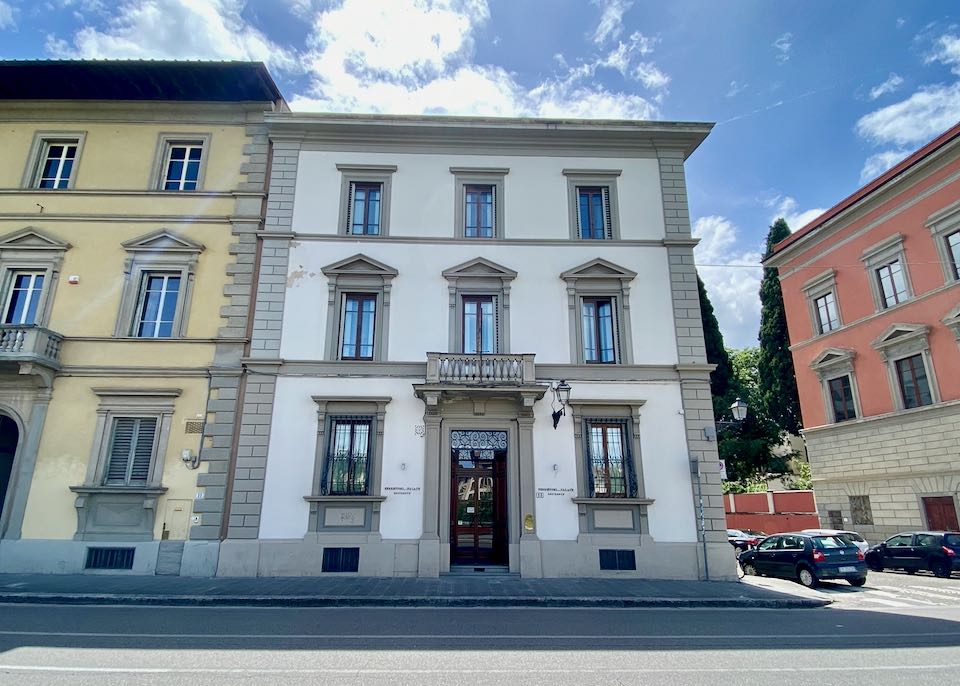
Serristori Palace hotel on the banks of the Arno in San Niccolò.
- Best Hotel in San Niccolò & Piazzale Michelangelo
Serristori Palace • Hotel phone: +39 055 200 1623- Best Cheap/Midrange Hotels
FuordArno Bed & Breakfast • Hotel phone: +39 055 241950
Hotel David • Hotel phone: +39 055 681 1695
Residence Michelangiolo • Hotel phone: +39 055 681 17488. The Hills of Oltrarno: Boboli Gardens
The rolling hills south of the main Oltrarno districts are blanketed by leafy, upscale residential neighborhoods. They are restful, full of lovely views, and can feel much more rustic and remote than they are – buses trundle up and down the hills, but it’s not that far to walk into the center (at least downhill). The key attraction here is the vast, hilly green space of the Boboli Gardens, sprinkled with grand fountains and statuary – most notably the stalactites and stone shepherds of the Grotta del Buontalenti. At the top of the gardens stands the Museo delle Porcellane’s vast porcelain collection, and the 16th-century Forte di Belvedere fortress. It’s possible to follow the line of the ancient city walls from here, with Via di Belvedere the most atmospheric (and least busy) section.
Visitors staying here will likely leave the area to go shopping or eat out, but it makes a pretty spot for wandering, with hill-set villas and sensational views at every corner. Accommodation includes pretty guesthouses and some lovely luxury hotels – expensive and exclusive. It’s a good place to stay if you’re driving, as you can park up here; only residents are allowed to park in central Florence), but factor in extra time to summit the hills if walking or taking buses.
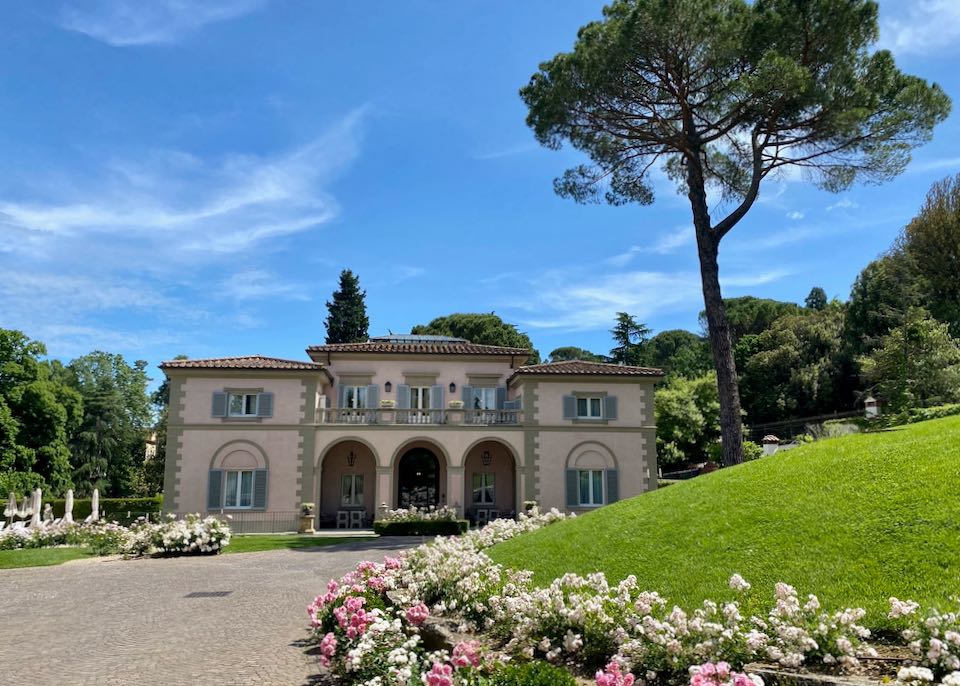
Gorgeous Villa Cora sits in the serene Oltrarno hills, only a quick drive into the city center.
- Best Hotels in the Oltrarno Hills
Art Hotel Villa Agape • Hotel phone: +39 055 220044
Villa Cora • Hotel phone: +39 055 228790
Villa Nardi • Hotel phone: +39 055 220 7465- Best Cheap/Midrange Hotels
Classic Hotel • Hotel phone: +39 055 229351
Torre dei Lari • Hotel phone: +39 337 127 5590More Florence Neighborhoods
We’ve covered our favorite neighborhoods to visit and stay in more detail above, but with more time the following districts are also worth checking out.
- Fiesole: With more time it’s worth taking the #7 bus up the hills north of Florence to the small community of Fiesole. (If the weather is good, it’s a pleasant walk back down to City Center.) The main sights up here include the Duomo on Piazza Mino, the artwork in the Museo Bandini, the ancient Roman Theater and its small museum, various Etruscan ruins, and the Badia Fiesolana, the town’s 9th-century cathedral. There are a handful of quiet pensiones and B&Bs if you’d like to stay the night – we especially like Pensione Bencistà and Le Cannelle bed and breakfast.
- Artemio Franchi Stadium: The home of Fiorentina, the city’s Serie A soccer team, lies around 2 miles northeast of the city center. It can be fun watching the “Viola”, especially when rivals Bologna or Juventus come to town. See the team website for match info. The best hotels near Artemo Franchi Stadium are Villa Neroli (which has an outdoor pool) and the charming and afffordable A Casa di Lilli guesthouse.
- As it’s so close to the city center, there’s not much point in staying near Florence Airport. The nearest hotels are not especially convenient, or good value. Hotels close to Pisa International Airport tend to be budget B&Bs and guesthouses – Ai 4 Elementi is a good choice.
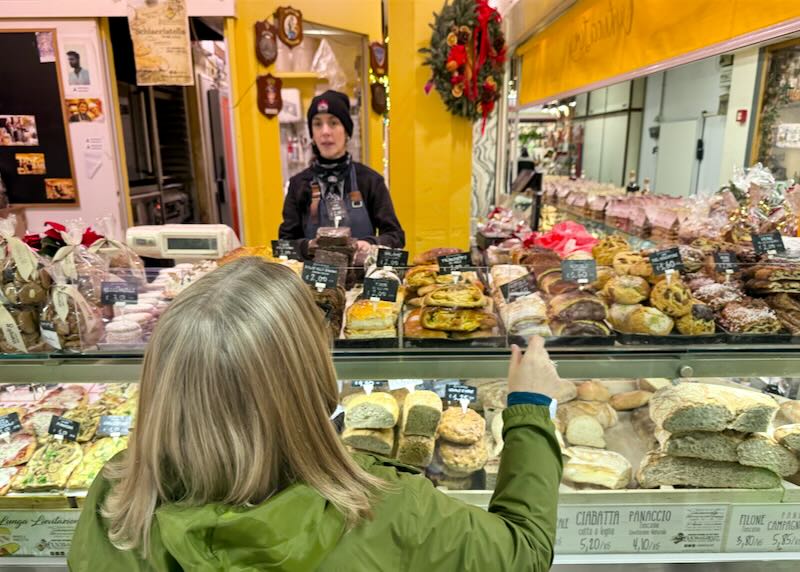
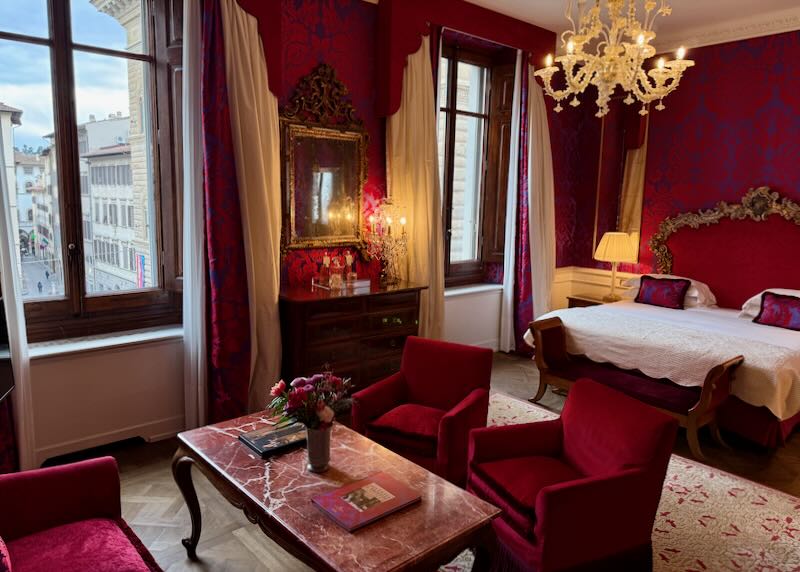
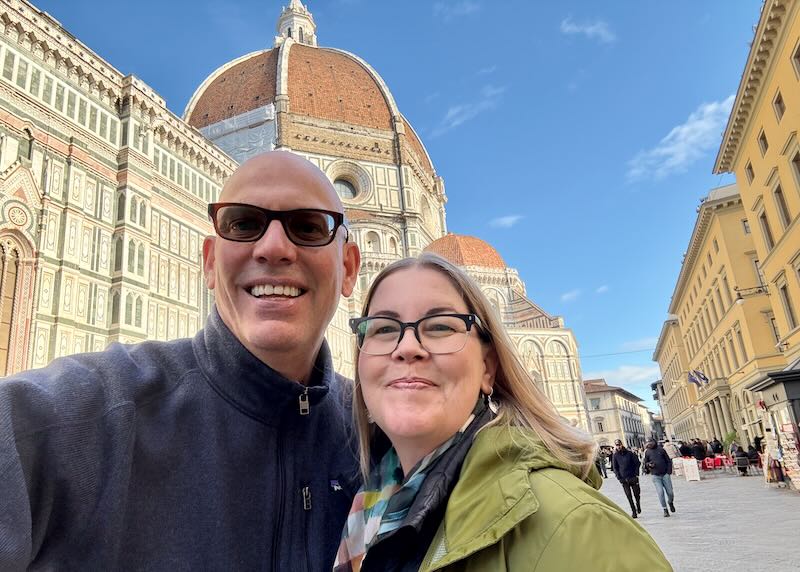
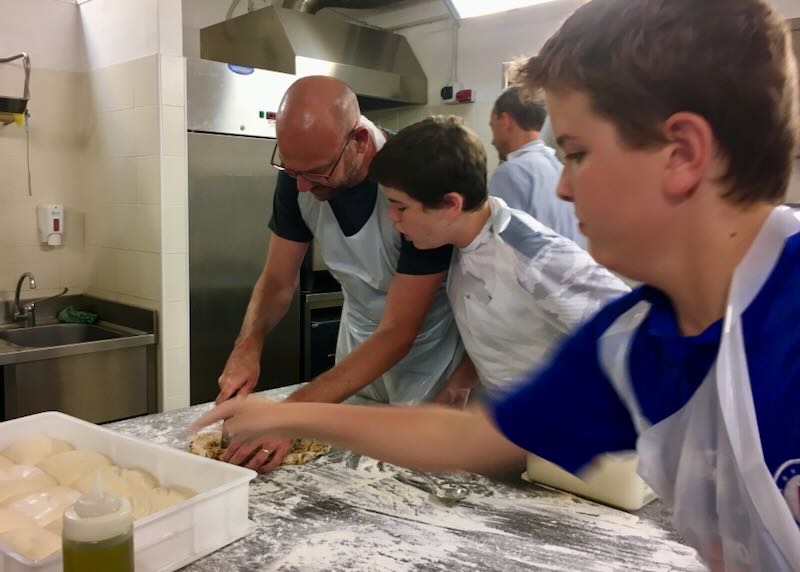
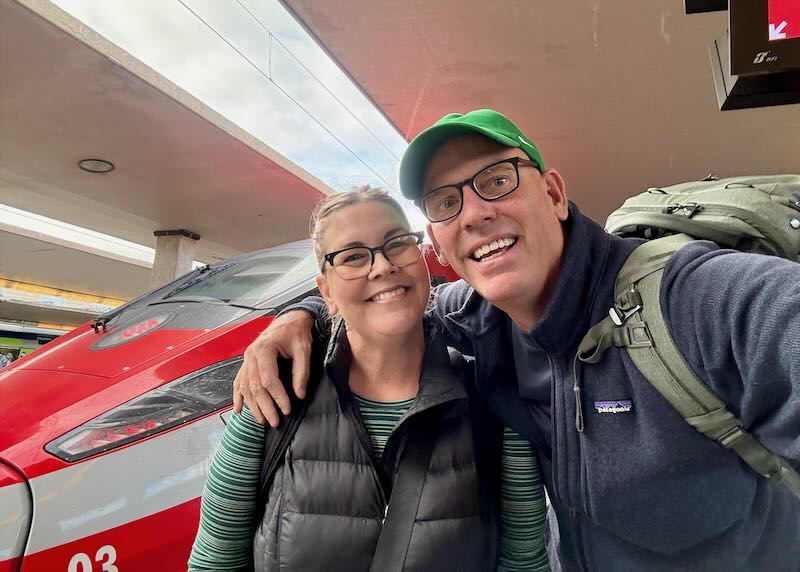
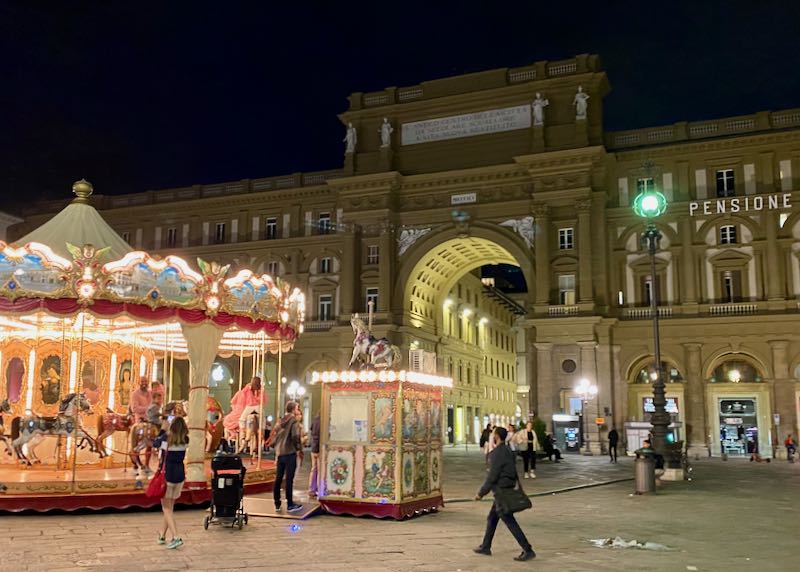

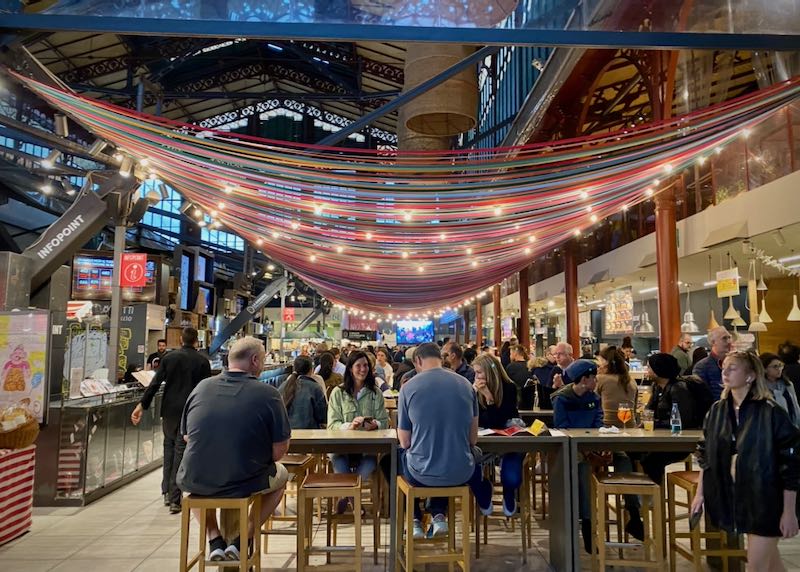

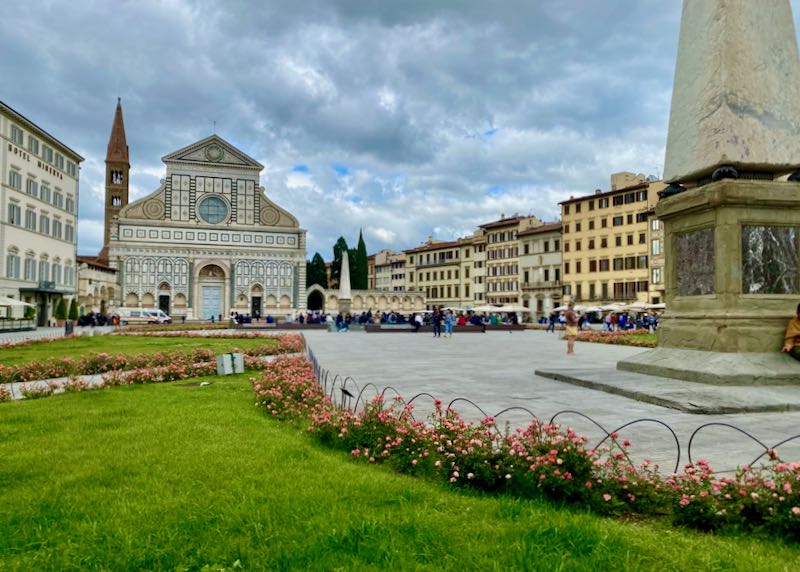

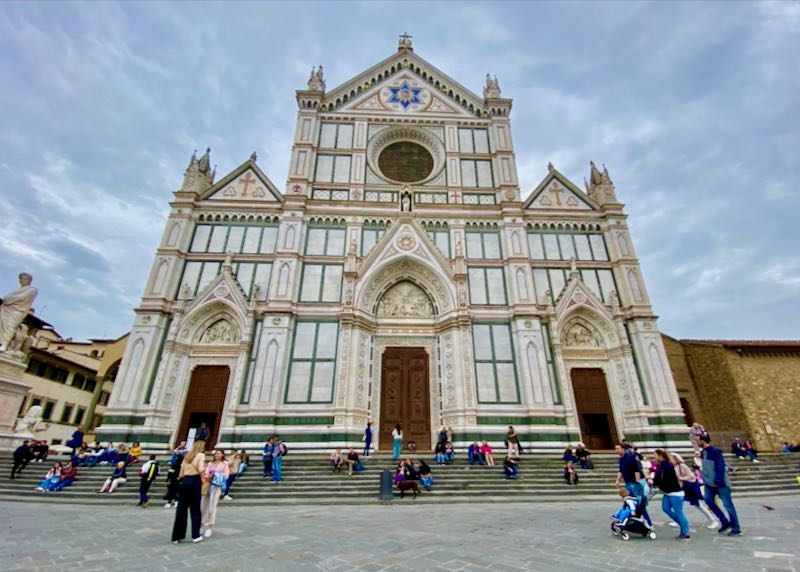

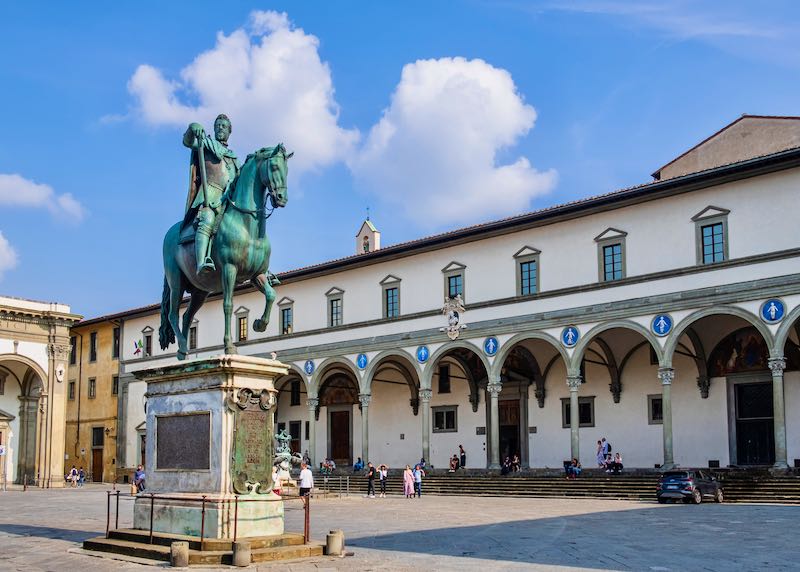

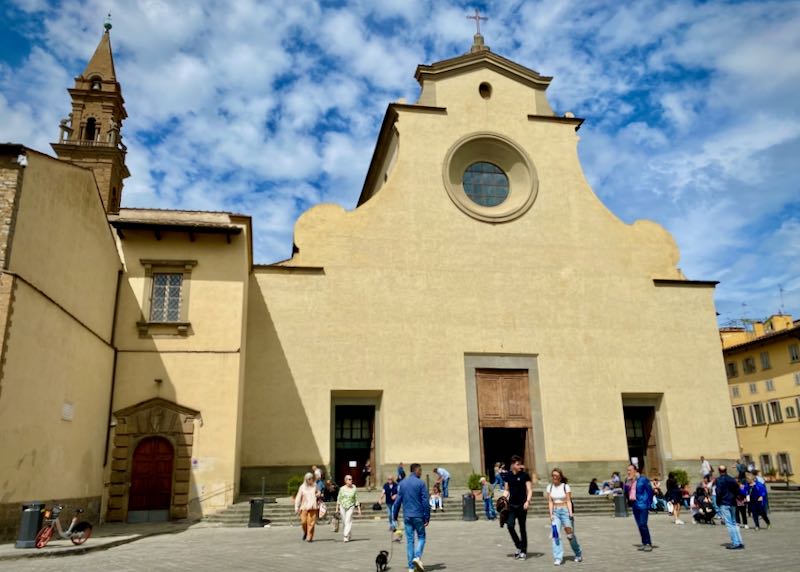

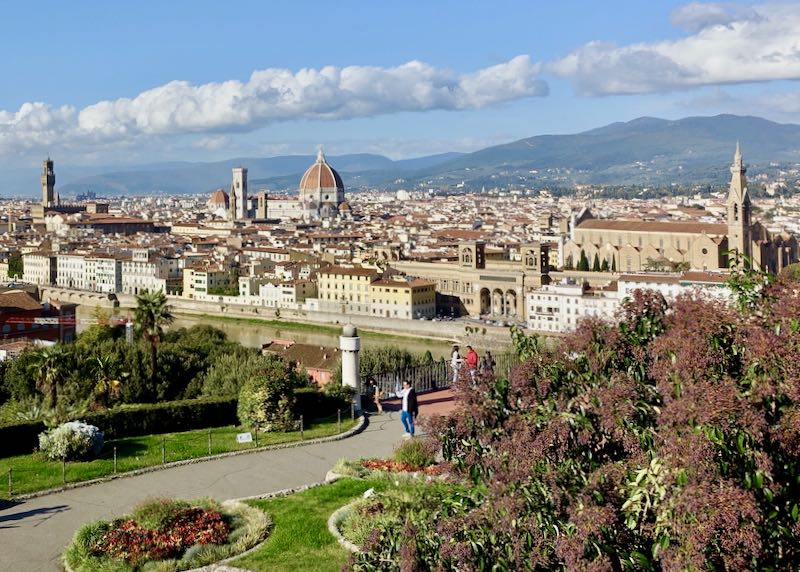

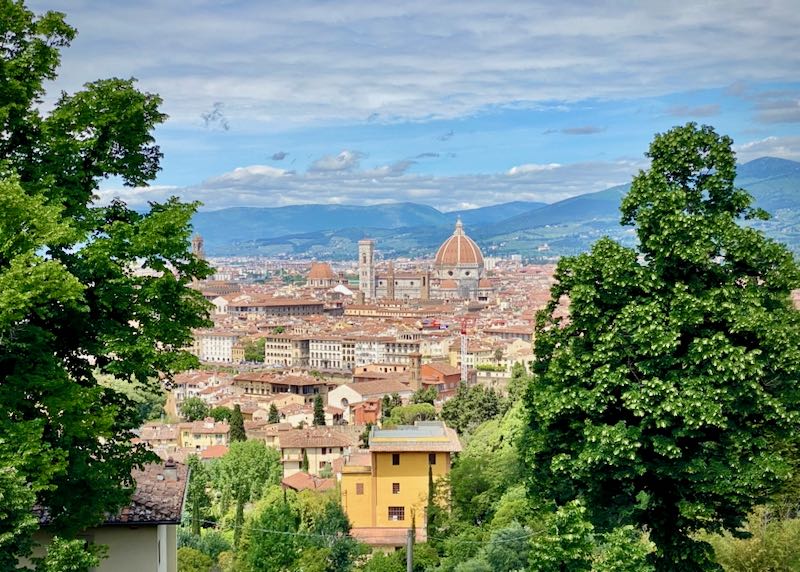

About Santorini Dave